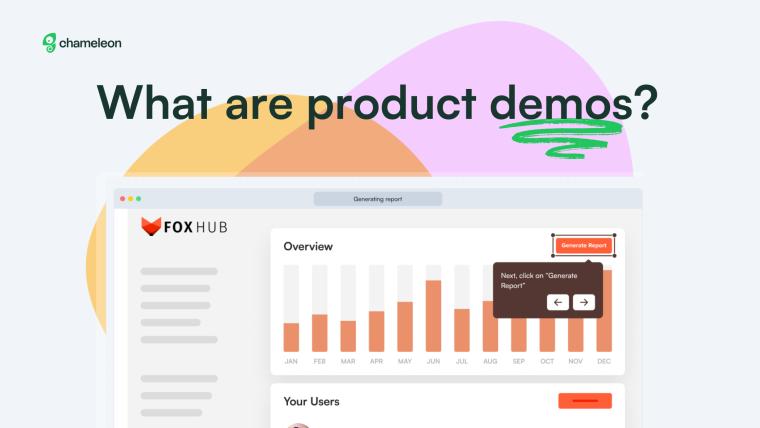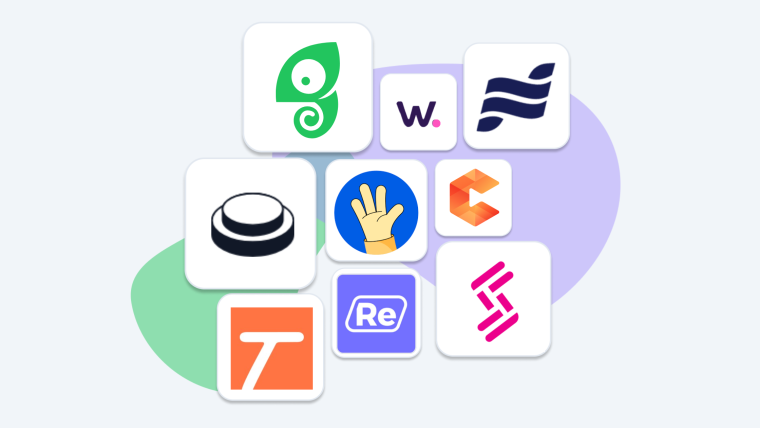Product-qualified leads, product-qualified accounts, product-led growth… phew! There are so many terms out there today, but each of these go-to-market strategies can help you achieve the growth goals you’re working towards.
Product-qualified leads (PQL) and product-qualified accounts (PQA) can make or break your revenue targets, but what are the actionable steps you can take to get there? We’ll walk through what is a PQL/PQA, some of the benefits, and five steps for implementing them at your company.
What are PQLs/PQAs?
You’re probably familiar with Marketing Qualified Leads, or MQLs, but what is the difference between an MQL and a PQL?
First, let’s define an MQL. Marketing qualified leads combine marketing activity, like website visits, events attended, and ebook downloads, with demographic and firmographic data, like a person’s title, company size, or ICP fit. In most software companies, there is one definition for an MQL and that helps to prioritize leads for the sales team.
On the other hand, a Product Qualified Lead (PQL) may include some of the information we mentioned above, like marketing activity, demographic, or firmographic data, but the biggest differentiator is that PQLs also use product usage data, like logins, new users added, or actions taken within the product.
The other major difference between MQLs and PQLs is that product-qualified leads have many definitions or triggers to help prioritize outreach. So rather than one lead score, you have lead scoring across the customer lifecycle for various paths your users make take.
Last but not least, Product Qualified Accounts (PQA) take an aggregate of the actions from users within an account to give an overview and score of that account as a customer and provide actionable, relevant next steps. Often a PQA has hit certain usage thresholds, activated new features, invited X amount of users, or potentially failed to take a key action, like integrating their data sources.
Why self-serve SaaS should leverage PQLs/PQAs
Companies with a self-serve motion often have too much of a good thing. There are lots of people signing up to use your product, but understanding what those users and accounts are doing is difficult, and so is determining the next steps when you don’t have the right context.
Often, this can lead to companies doing one of two things:
Reaching out to all users in an irrelevant manner
Not reaching out at all for fear of being irrelevant and missing opportunities
PQLs and PQAs provide the necessary information about who a user is, and what they’re doing, and provide prioritization on who to reach out to and when. By targeting specific users with personalized messaging when they’re ready to convert, conversion rates can increase significantly – in fact, PQLs have a conversion rate of 15-30%, which is often much higher than MQLs!
On top of that, targeting specific accounts that exhibit signs of expansion leads to higher contract values. By using product-qualified leads and accounts, messaging and timing are tailored to the user experience – better for buyers and sellers alike.
5 steps to developing PQLs and PQAs
Identify activation/product “north star”
In product-led growth companies, there is an “aha moment”. That is the moment when a new user of your product is wowed by your product and understands its value. For companies, knowing the steps that lead to the moment of true activation can be a game-changer in helping users be successful.
These key steps will become your guiding north star – meaning your team should be nudging users towards this successful path. This can include things like integrating different platforms, building a dashboard, or running their first action.
A question to consider:
What are the things your top converting users and accounts do in your product to become successful?
Determine ICP at the user and account level
Defining your ideal customer profile (ICP) is an important step in the sales process. An ICP helps a company to identify its most valuable and likely to be successful customers, both at the user level (individuals) and at the account level (companies).
At the user level, the ICP should include characteristics such as job title, industry, company size, location, and key pain points or challenges that the product or solution can address.
At the account level, the ICP should include characteristics such as company size, industry, location, and key pain points or challenges that the product or solution can address. By clearly defining the characteristics of your ideal customer, you can more effectively target your marketing and sales efforts, which can lead to higher conversion rates and customer satisfaction.
Things to consider:
What is your ideal customer profile (ICP)?
Which end users are your champions? Who are your buyers/decision makers?
Which accounts are most likely to convert to become great customers?
Combine product activation with ICP
To improve the efficiency and effectiveness of your sales and marketing efforts, the best practice is to leverage playbooks for users and accounts that demonstrate both high-value product usage, as well as having attributes that match your Ideal Customer Profile (ICP). These playbooks can include specific messaging and outreach strategies, as well as detailed information about the product or solution and how it can address the needs of these high-value prospects.
Using user PQL/PQA scores can help to rank prospects for sales and to prioritize outreach efforts. Trigger-based rules for marketing and sales onboarding communications can help to ensure that the right message is delivered to the right prospect at the right time, improving the chances of conversion.
Things to consider:
Put together Playbooks for Good Fit Users and Accounts that are High Activity
User PQL/PQA Scores for ranking for sales
Utilize trigger-based rules for marketing and sales onboarding communications
Build Playbooks across GTM teams
Playbooks that trigger off-product usage should be leveraged across the entire customer lifecycle. That means that they’ll be used across your team, including Marketing, Sales, SDRs, SEs, and CSMs. Not sure where to begin? Correlated has built a free playbook library you can leverage to begin building playbooks across your customer journey.
Playbooks could be something as simple as a Slack notification to a user or a channel to let them know about an action that should be taken, or you could trigger other actions, like an email being sent with variable personalization tags, ads being run to certain people or accounts, or helpful onboarding tips.
Things to consider:
Marketing, Sales, SDRs, SEs, and CSMs can all utilize PQL and PQA Playbooks
Use Correlated’s Playbook Library for ideas
Reach out to high-intent scoring users and accounts with Email + Slack + Onboarding support
Iterate and learn on PQLs/PQAs
Conversion rates are a crucial metric for any software company. How many users convert from a free to a paid subscription? What percentage converts from an individual to a team or enterprise plan?
In the midst of tracking all these conversion rates across the customer lifecycle, companies are also adding new features to their product, testing new pricing, and so on. As these changes are rolled out, your PQLs and PQAs will also need to adjust.
Product-qualified leads and accounts are not a “set it and forget it” approach, it’s important to always be tracking success and shifting as needed.
Things to consider:
Product is constantly changing, adapt goals as you go
PQLs/PQAs will change as well: iterate and test to see which Playbooks are converting (or not)
Build a product-led GTM approach for higher conversion rates and more pipeline in 2023
Layering product-led strategies, like PQLs and PQAs, into your go-to-market approach can lead to higher conversion rates and more pipeline.
You’ll be able to more effectively communicate the value of your product, ensure that your customers are receiving relevant and personalized messaging, and do some in a timely fashion.
If you’re curious to learn how Correlated can help you, try it for free here. If you’d like to connect with other product-led leaders, join the community.
And if you’re looking for a product adoption platform that can help you sync data across your tech stack and guide PQLs and PQAs to success with in-app guidance, you can get started with Chameleon for free, or book a personalized demo with our product expert to see it in action.
Show the right messages to the right users
Make your in-app guides timely, relevant, and contextual for product-qualified leads. Build Tours, Tooltips, Launchers, and Microsurveys in minutes with Chameleon.
How to Drive More Product-Led Revenue with PQLs
This article is written by Breezy Beaumont, Head of Marketing at Correlated. Prior to Correlated, Breezy held marketing leadership roles at Alation, Cogito, and LogicManager.





